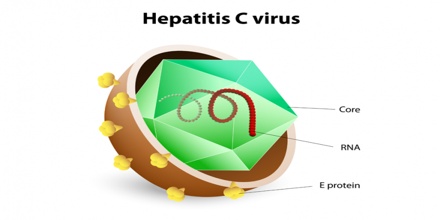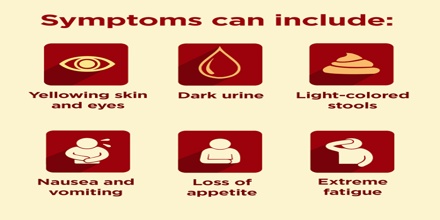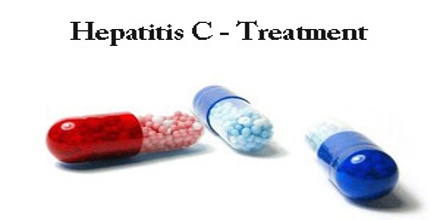Describe about Hepatitis C
Hepatitis C is a viral infection that causes liver inflammation, sometimes leading to serious liver damage. The hepatitis C virus (HCV) spreads through contaminated blood. The virus persists in the liver in about 75% to 85% of those initially infected. Early on chronic infection typically has no symptoms. Over many years however, it often leads to liver disease and occasionally cirrhosis. In some cases, those with cirrhosis will develop complications such as liver failure, liver cancer, or esophageal and gastric varices.

At least half of hepatitis C patients develop chronic hepatitis C infection. Diagnosis is made by blood test. Treatment and probably cure is via antiviral drugs and is effective in over 90% of patients. Chronic hepatitis C was frequently treated with injectable interferon, in combination with antiviral oral medications, but now is most often treated with oral antivirals alone. There is no vaccine for hepatitis C.

Facts of Hepatitis C
Hepatitis C is one of several viruses that cause hepatitis (inflammation of the liver).
About 3.5 million people are estimated to be currently infected with hepatitis C in the U.S.
Up to 85% of individuals who are initially (acutely) infected with hepatitis C will fail to eliminate the virus and will become chronically infected.
Hepatitis C is spread through exposure to infected blood. Intravenous drug abuse with the use of contaminated, shared needles is the most common mode of transmission.
The risk of acquiring hepatitis C through sexual contact or breastfeeding is very low.
Generally, people with chronic infection with hepatitis C have no symptoms until they have extensive scarring of the liver (cirrhosis). Some individuals, however, may have fatigue and other non-specific symptoms before this occurs.
Much progress has been made in the treatment of hepatitis C. The rate of cure has increased (above 90%-95%) with the development of direct-acting, all-oral antiviral medications.
Treatment results in reduced inflammation and scarring of the liver in most patients who are cured of hepatitis C and also occasionally in those who relapse or are not cured.
Causes and Symptoms
Hepatitis C infection is caused by the hepatitis C virus. The infection spreads when blood contaminated with the virus enters the bloodstream of an uninfected person.

Globally, HCV exists in several distinct forms, known as genotypes. The most common HCV genotype in North America and Europe is type 1. Type 2 also occurs in the United States and Europe, but is less common than type 1. Both type 1 and type 2 have also spread through much of the world, although other genotypes cause a majority of infections in the Middle East, Asia and Africa.
Although chronic hepatitis C follows a similar course regardless of the genotype of the infecting virus, treatment recommendations vary depending on viral genotype.
The incubation period for hepatitis C is 2 weeks to 6 months. Following initial infection, approximately 80% of people do not exhibit any symptoms. Among these signs and symptoms are:
- Bleeding easily
- Bruising easily
- Fatigue
- Poor appetite
- Yellow discoloration of the skin and eyes (jaundice)
- Dark-colored urine
- Itchy skin
- Fluid buildup in your abdomen (ascites)
- Swelling in your legs
- Weight loss
- Confusion, drowsiness and slurred speech (hepatic encephalopathy)
- Spider-like blood vessels on your skin (spider angiomas)
Every chronic hepatitis C infection starts with an acute phase. Acute hepatitis C usually goes undiagnosed because it rarely causes symptoms. When signs and symptoms are present, they may include jaundice, along with fatigue, nausea, fever and muscle aches. Acute symptoms appear one to three months after exposure to the virus and last two weeks to three months.
Treatment and Prevention
There are a number of diagnostic tests for hepatitis C, including HCV antibody enzyme immunoassay or ELISA, recombinant immunoblot assay, and quantitative HCV RNA polymerase chain reaction (PCR). HCV RNA can be detected by PCR typically one to two weeks after infection, while antibodies can take substantially longer to form and thus be detected.

Hepatitis C does not always require treatment as the immune response in some people will clear the infection, and some people with chronic infection do not develop liver damage. When treatment is necessary, the goal of hepatitis C treatment is cure. The cure rate depends on several factors including the strain of the virus and the type of treatment given.
The standard of care for hepatitis C is changing rapidly. Until recently, hepatitis C treatment was based on therapy with interferon and ribavirin, which required weekly injections for 48 weeks, cured approximately half of treated patients, but caused frequent and sometimes life-threatening adverse reactions.

There is no vaccine for hepatitis C, therefore prevention of HCV infection depends upon reducing the risk of exposure to the virus in health-care settings and in higher risk populations, for example, people who inject drugs, and through sexual contact. The following list provides a limited example of primary, secondary and tertiary prevention interventions recommended by WHO:
- hand hygiene: including surgical hand preparation, hand washing and use of gloves;
- safe handling and disposal of sharps and waste;
- provision of comprehensive harm-reduction services to people who inject drugs including sterile injecting equipment;
- testing of donated blood for hepatitis B and C (as well as HIV and syphilis);
- training of health personnel; and
- promotion of correct and consistent use of condoms.
- education and counselling on options for care and treatment;
- immunization with the hepatitis A and B vaccines to prevent coinfection from these hepatitis viruses and to protect their liver;
- early and appropriate medical management including antiviral therapy if appropriate; and
- regular monitoring for early diagnosis of chronic liver disease.
As of 2016, no approved vaccine protects against contracting hepatitis C. However, there are a number of vaccines under development and some have shown encouraging results.















